Baby Shoes for Wide Feet – The Best Shoes for a Baby with Wide or Extra Wide Feet!
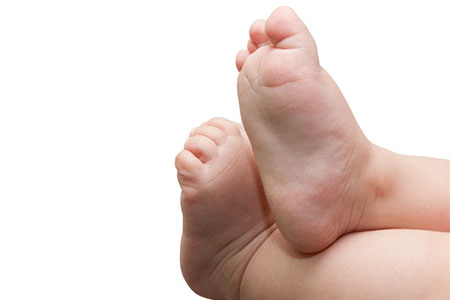
Struggling to find shoes that fit your baby’s puffy feet? Many babies have wide or extra wide feet due to lingering baby fat, making it tough to find shoes that fit comfortably without looking oversized. The best baby shoes for wide feet feature roomy toe-boxes, extra depth, and wide openings for easy on and off. As an experienced shoe fitter specializing in baby and toddler footwear, I’ve put together a list of the best baby shoes available in wide and extra wide widths to help you find the perfect fit.
Why Choosing Wide Shoes for Babies Matters
Babies are constantly wiggling their toes—it’s their natural way of strengthening foot muscles and preparing for walking. That’s why it’s so important to choose shoes that allow for free movement. Make sure your baby’s first walking shoes offer a wide, roomy toe-box so their little toes aren’t cramped or restricted during this critical stage of development.
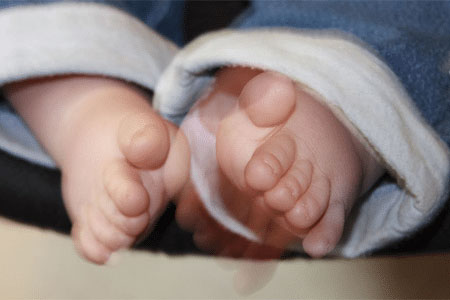
Six Key Features to Look for in Baby Shoes for Wide Feet
One common mistake parents make is assuming that any shoe labeled wide (W) or extra wide (XW) will automatically fit their baby’s wide feet. In reality, the right shoes must also offer these key features:
Feature One: Extra Depth. Shoes with extra depth let your baby’s feet sit comfortably inside, reducing pressure on the top of the foot (instep) and preventing rubbing that can lead to irritation or blisters. This design also keeps the toes from pressing against the top front of the shoes, ensuring a more comfortable and secure fit.
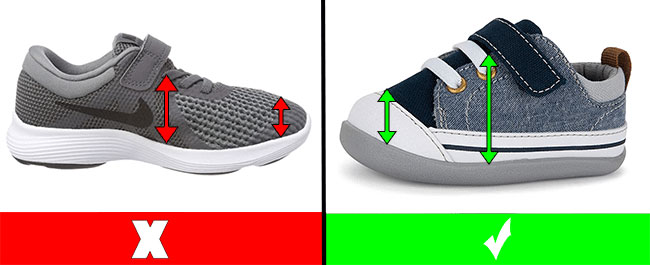
Feature Two: Rounder Toe-Boxes. Round toe-boxes are crucial as they offer more space for the toes to spread naturally. This shape is ideal for wide feet, preventing crowding and allowing for natural foot splay, which is vital for balance and walking.

Feature Three: Oversized Openings. This feature allows the shoe to open wide, making it easier to slide onto a wider foot without struggle. It also minimizes wear and tear on the shoe, extending its lifespan.
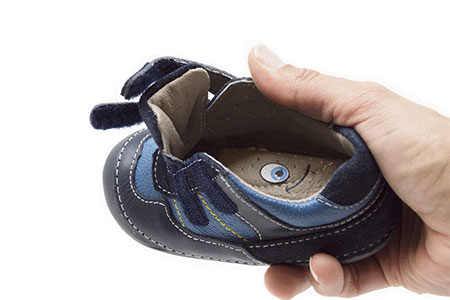
Feature Four: Flexible Soles. Flexible soles are vital for encouraging natural foot movement. They allow your baby’s feet to bend and flex as they would barefoot, which is important for developing strength and coordination. Ensure the shoes you choose have soles that are both flexible and durable.

Feature Five: Sensory Pods. Sensory pods help your baby feel the ground beneath their feet, boosting balance, grip, and stability. This feature plays a key role in preventing slips and falls as your baby learns to walk.
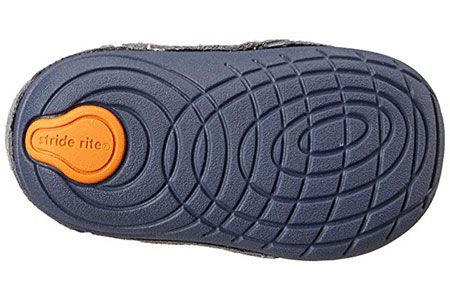
Feature Six: Extra Padding: Extra padding in shoes provides a soft barrier between your child’s foot and the shoe material. This cushioning helps to absorb shock and reduce pressure points that can lead to blisters.
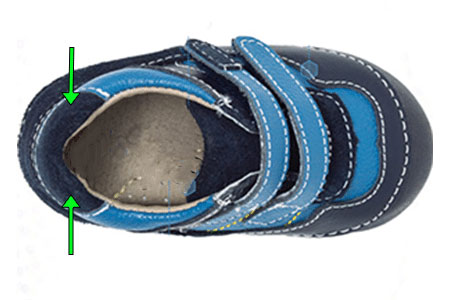
The 3 Most Popular Baby Shoe Brands
My top three recommended shoe brands for babies with wide feet are Stride Rite, See Kai Run, and Tsukihoshi. While all three offer great options, I’ve found that certain styles within these brands consistently provide a better fit and comfort for babies and toddlers with wide or extra wide feet.
Selecting the perfect pair of shoes for your baby involves more than just picking a style you like. A holistic approach considers factors such as fit, materials, and functionality. Disclosure: Some links may be affiliate links, meaning we earn a small commission at no extra cost to you.
Best Baby Shoes for Wide Feet – Round Toe-Boxes and Extra Deep
Here are my top recommendations for baby shoes for wide feet in 2025. These options combine all the essential features discussed to provide comfort, support, and style:
1. Shoe Style Stevie II by See Kai Run
These See Kai Run baby shoes are a popular choice among parents for its wide toe box and adjustable straps, making it an excellent option for kids with wide feet.
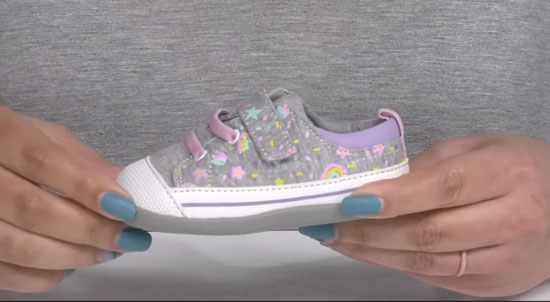
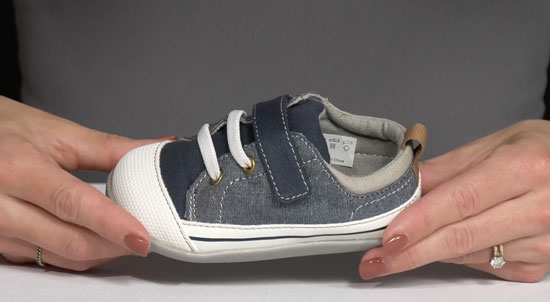
Key Features
- Order the shoe Stevie II by See Kai Run on Amazon or Zappos
- Not available in wide or extra wide widths but fits naturally wide
- Awarded the Seal of Acceptance from the American Podiatric Medical Association (APMA)
- Durable cotton drill upper, comfy leather insole, and recycled mesh lining keep feet fresh
- Breathable textile lining and cushioned insole
- I suggest that you get this shoe a whole size larger than your toddler’s current foot size
2. Shoe Style Thompson by Stride Rite
These Stride Rite baby shoes feature a flexible sole and a rounded toe design to support natural movement, making them a favorite among parents and podiatrists alike.
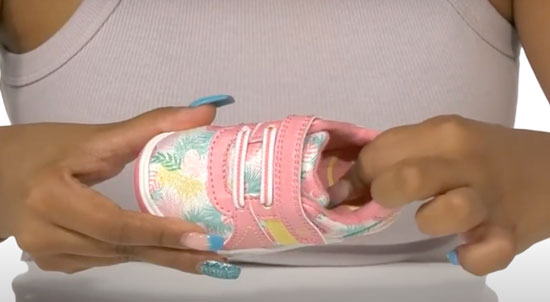
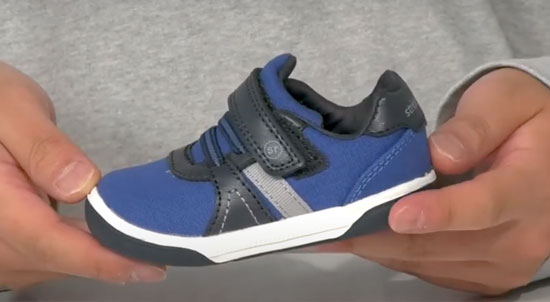
Key Features
- Order the shoe Thompson Sneaker on Amazon
- Available in wide widths
- Awarded the Seal of Acceptance from the American Podiatric Medical Association (APMA)
- Padded tongue and collar for added comfort
- Breathable textile lining and cushioned insole
- I suggest that you get this shoe a whole size larger than your toddler’s current foot size
3. Shoe Style Racer by Tsukihoshi
Tsukihoshi baby shoes are lightweight, flexible, and capable of accommodating babies with wide feet and high insteps.

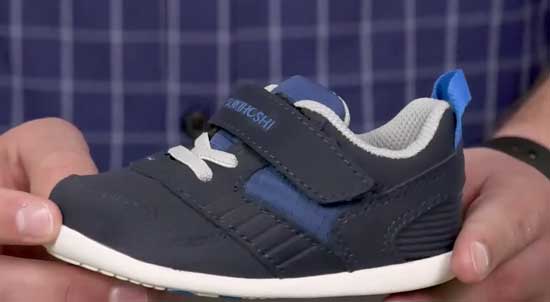
Key Features
- Order the shoe Artie and Adalyn by Stride Rite on Amazon or Zappos
- Rounded edges to decrease stumbles and falls
- Available in wide and extra wide widths
- I suggest that you get this shoe a whole size larger than your child’s current foot size
4. Shoe Style Artie and Adalyn by Stride Rite
These Stride Rite baby walking shoes provide excellent width options (wide and extra wide) and a comfortable fit. Their design includes flexible outsoles and cushioned insoles, which are essential for active toddlers.

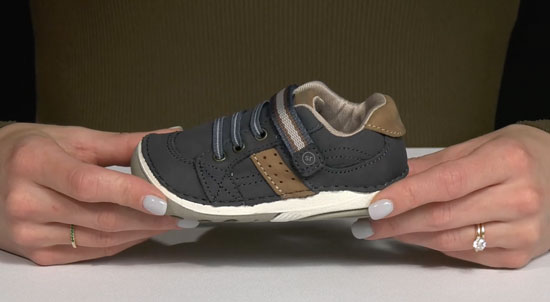
Key Features
- Order the shoe Artie and Adalyn by Stride Rite on Amazon or Zappos
- Rounded edges to decrease stumbles and falls
- Available in wide and extra wide widths
- I suggest that you get this shoe a whole size larger than your child’s current foot size
5. Shoe Style Elliott by Stride Rite
These Stride Rite booties for babies offer a stable base of support and a comfortable fit, making them a top choice for babies with wide feet.
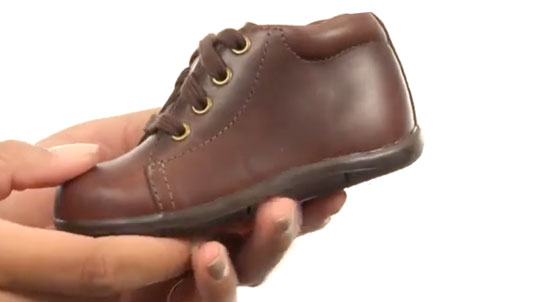
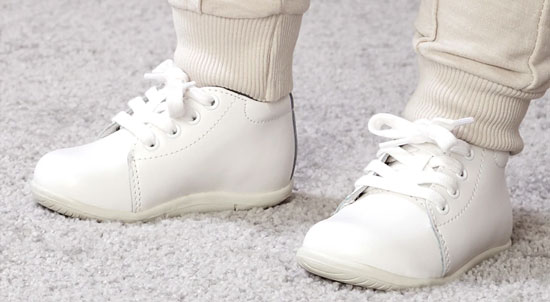
Key Features
- Order the shoe SRT Elliot by Stride Rite on Amazon or Zappos
- Available in wide and extra wide widths
- 100% leather made
- I suggest getting this shoe a whole size larger than your toddler’s current foot size
6. Shoe style Archie and Kiki by Stride Rite
These baby sandals are crafted to provide maximum comfort for wide feet. With their breathable materials and secure fit, they offer the support and flexibility needed for a growing child.
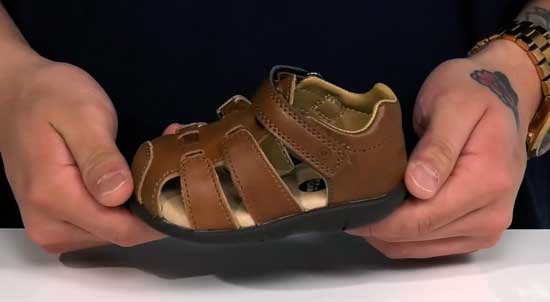
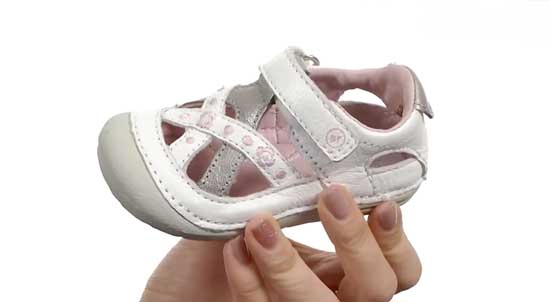
Key Features
- Order the shoe Archie and Kiki on Amazon or Zappos
- Available in wide and extra wide widths
- Leather upper
- Foam padding placed around the ankle collar and under the tongue for a comfortable fit
- I suggest that you get this shoe a half size larger than your toddler’s current foot size
7. Shoe Style Martin by Stride Rite
These baby shoes feature a wide toe box and plush cushioning, making it perfect for everyday wear.
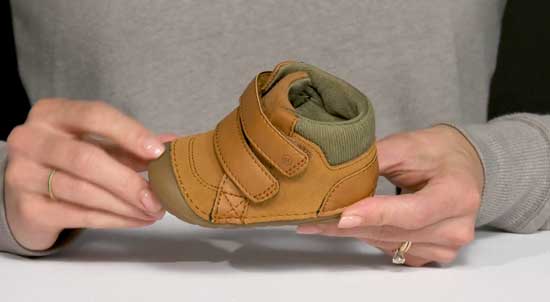
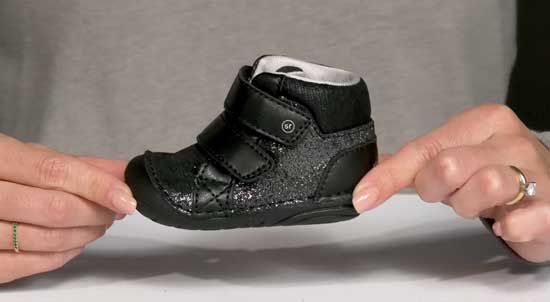
Key Features
- Order the shoe Martin by Stride Rite on Zappos
- Available in wide and extra wide widths
- I suggest that you get this shoe a whole size larger than your toddler’s current foot size
8. Shoe Style Casey by See Kai Run
These See Kai Run booties provide extra depth, rounded toe-boxes, and opens up nice and wide for easy on and off.
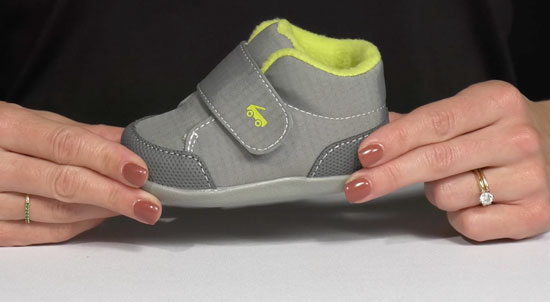
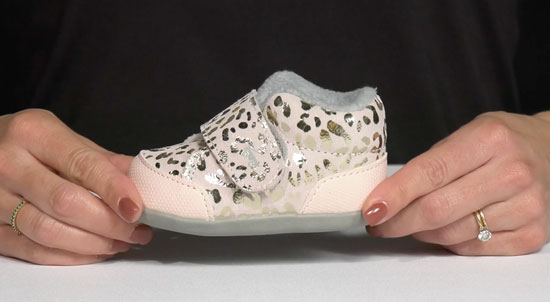
Key Features
- Order the shoe Casey by See Kai Run on Amazon or Zappos
- Not available in wide or extra wide widths but fits naturally wide
- Awarded the Seal of Acceptance from the American Podiatric Medical Association (APMA)
- Fleece lining for extra warmth
- I suggest that you get this shoe a whole size larger than your toddler’s current foot size
9. Shoe Style Lucia by See Kai Run
These baby girl Mary Jane shoes feature a roomy toe box, flexible sole, and breathable materials to support healthy foot development and all-day comfort for early walkers.
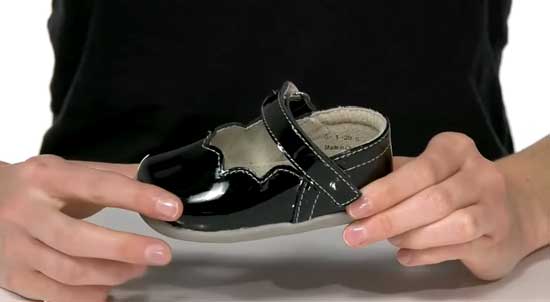
Key Features
- Order the shoe Casey by See Kai Run on Amazon or Zappos
- Not available in wide or extra wide widths but fits naturally wide
- Awarded the Seal of Acceptance from the American Podiatric Medical Association (APMA)
- Fleece lining for extra warmth
- I suggest that you get this shoe a whole size larger than your toddler’s current foot size
10. Merrell Kids’ Bare Steps Sneaker
These Merrell baby shoes are designed with a wide toe box and a barefoot feel, encouraging natural foot development.
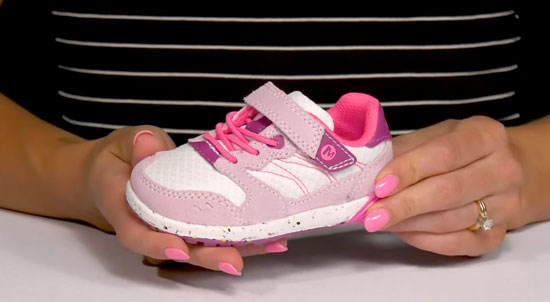
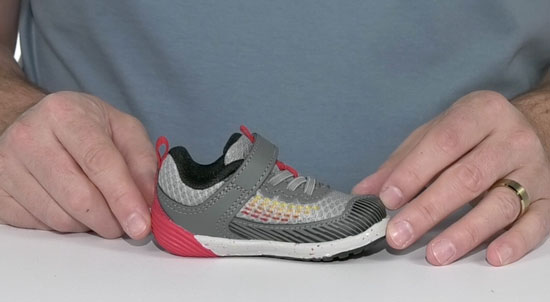
Key Features
- Order the shoe Bare Steps by Merrell on Amazon or Zappos
- Not available in wide or extra wide widths but fits naturally wide
- Awarded the Seal of Acceptance from the American Podiatric Medical Association (APMA)
- Padded tongue and collar for added comfort
- I suggest that you get this shoe a whole size larger than your toddler’s current foot size
Seeking Personalized Recommendations
Finding the right shoes for your baby’s wide feet can feel like a daunting task. With so many factors to consider, it’s easy to become overwhelmed. If you’re unsure about which shoes to choose, consider seeking personalized recommendations. As a shoe fitter with years of experience, I offer tailored advice to help parents select the perfect pair of shoes for their children. You can contact me via email for specific shoe recommendations tailored to your baby’s wide feet.
How to Retrieve Your Baby’s Exact Foot Length and Shape
If you don’t have access to a local children’s shoe store, don’t worry—I created a virtual shoe fitting service to help you measure your baby’s feet from the comfort of home. This easy-to-use tool helps you identify your child’s exact size, including whether they have narrow, medium, wide, or extra wide feet. I can also help you determine if your baby has a high instep, which is key for finding a comfortable, supportive fit.
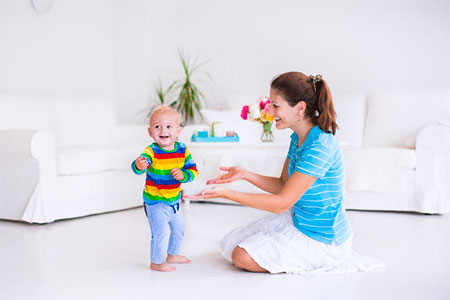
Is It Safe to Buy Baby Shoes Based on Age Guidelines?
While age-based shoe sizing charts can be a helpful starting point, they’re not always accurate. Every baby grows at a different pace, and foot shape and size can vary widely. I always recommend measuring your baby’s feet for the best fit, but if you’re just getting started, here’s a general size guide by age—just keep in mind it’s only an estimate. Accurate measurements are the key to finding shoes that truly support and protect your baby’s growing feet.
- 0-3 months: Size 1
- 3-6 months: Size 2
- 6-9 months: Size 2.5 or 3
- 9-12 months: Size 3.5 or 4
- 12-18 months: Size 4.5 or 5
- 18-24 months: Size 5.5 or 6
Best Socks for Babies with Wide Feet – Seamless and Breathable
Gripper socks are perfect for keeping your baby steady when walking barefoot around the house—but they’re not ideal inside shoes. When it comes to pairing socks with shoes, the focus should be on breathability and a seamless design. Breathable, seamless socks give your baby the freedom to wiggle their toes comfortably and help prevent irritation, making them the best choice for all-day wear.
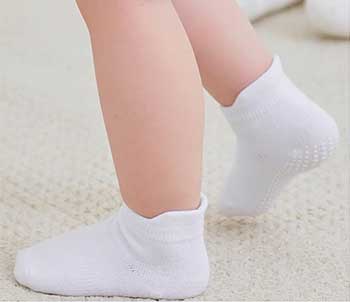
- Order these socks made by Zaples on Amazon
- Strong grips at the bottom covers the whole foot from heel to toe
- The pull tabs behind the ankle helps the mom to put on and take off the socks very easily
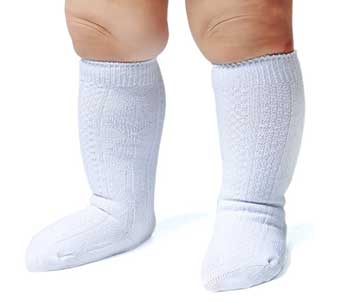
- Order these socks made by Epeius on Amazon
- 76% combed cotton, 21% polyester and 3% spandex
- Seamless cable/ribbed knit knee high socks for babies
- Breathable
- Machine wash
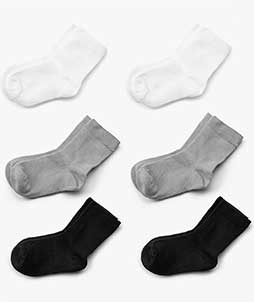
- Order these socks made by SilkyToes on Amazon
- 80% Rayon from Bamboo, 10% Polyester, 5% Nylon, 5% Spandex
- Cushioned sole to keep your child’s feet comfortable
- Machine wash
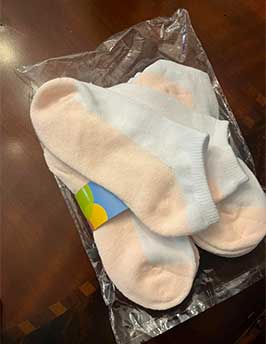
- Order these socks made by Jefferies on Amazon
- Smooth toe seam provides less irritation and bulk for sensitive toes and feet
- Made with premium ultra soft cotton
- Quarter ribbed stay-up top is extra comfortable around ankles
Have questions? Drop them in the comments below—I’m here to help and will get back to you as soon as possible!

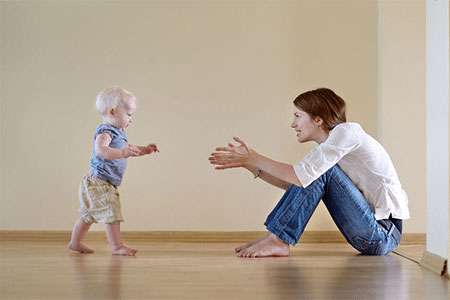
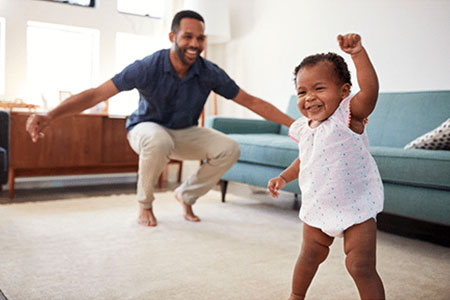
Hey! I have a baby of 5 months older but he is a little bit fat!! Which size is good for my baby shoes?? Can I use size 2 which you mention in the above???
Hi Jessica –
It’s highly likely that your 5 month old baby needs to wear a shoe in a size 2 or 2 1/2. You will have to order the shoe in a wide or extra wide width.
My baby’s feet always used to had red marks when I took the shoes off. I knew this wasn’t normal, so I ordered a pair of the shoes that you recommend and now I don’t see the red marks on his feet anymore. Thank you so much!
Hi Shelby,
You should never see red marks on your baby’s feet, that is the first sign that the shoes are probably too narrow. I am happy to hear that the shoes worked out for your baby’s feet.